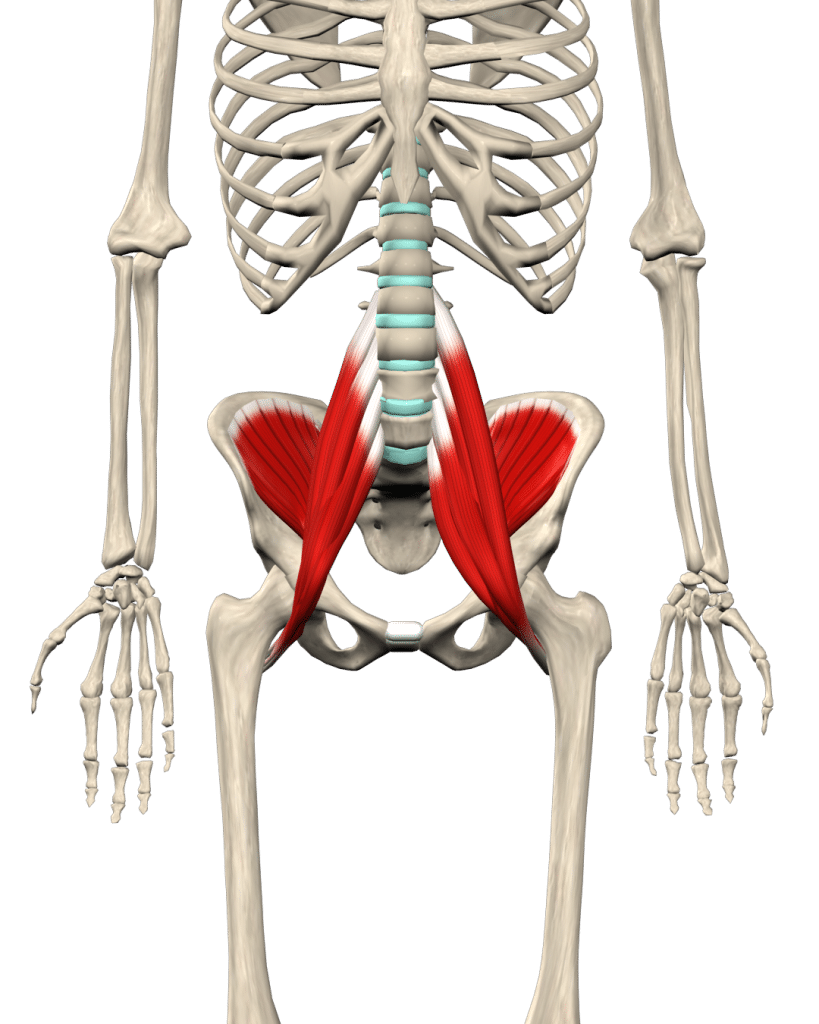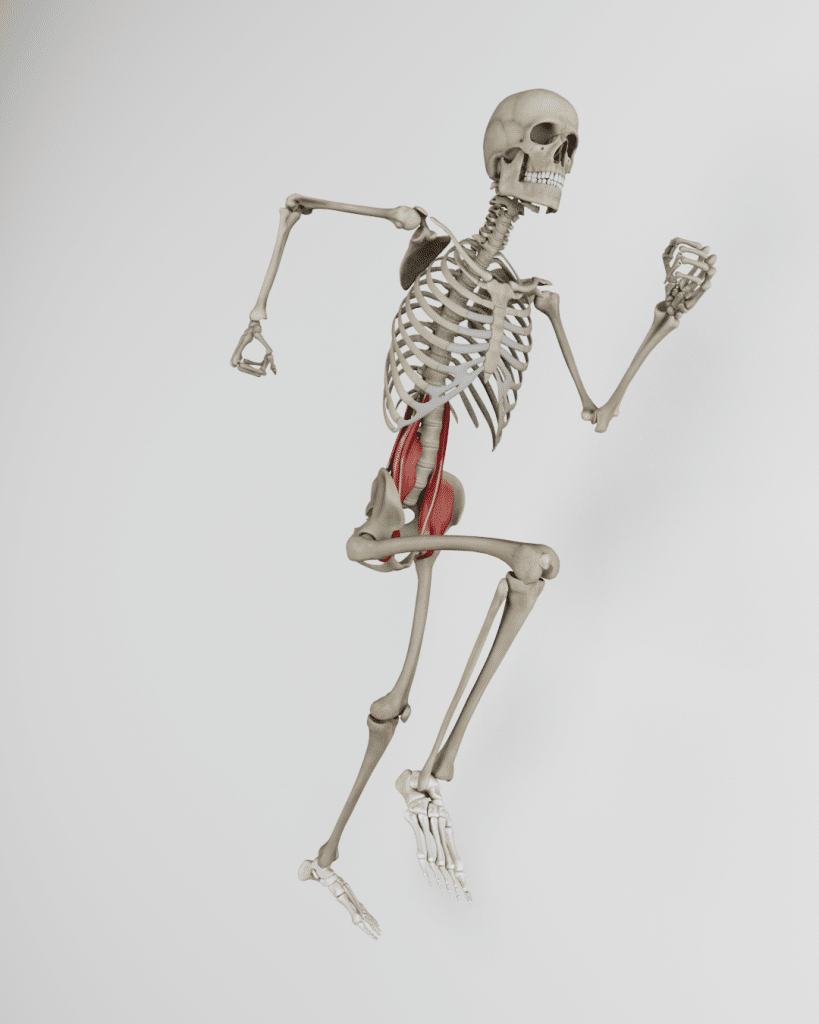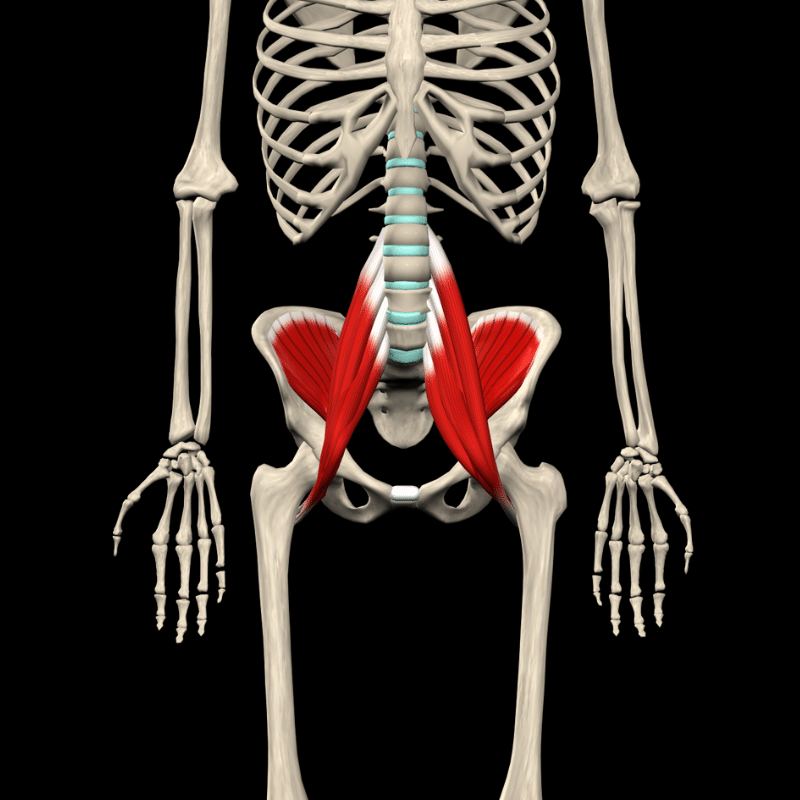In recent years, the topic of strengthening the iliopsoas muscle has sparked considerable interest and questions. One prevalent question is the necessity of additional strengthening for this muscle, particularly given its significant role in forward motion.
In this Muscle and Motion article, I will answer those questions as a physical therapist and personal trainer.

Understanding the value of strength training
First, it’s important to recognize that strength training has its benefits, which vary depending on individual goals. Strengthening muscles is similar to saving for retirement early in life. The more you work on strengthening a muscle during your younger years, the stronger it will become. This proactive approach can help reduce muscle mass loss and strength as you age. For a more in-depth understanding, refer to our detailed article on this topic.
The role of the iliopsoas
The iliopsoas, located in the thigh’s anterior compartment, consist of two muscles: the psoas major and the iliacus. Understanding the functions of the iliopsoas is key to appreciating the benefits of its strengthening. The iliopsoas is the primary hip flexor muscle and assists in hip external rotation. It is vital for maintaining hip joint strength and integrity, ensuring proper lumbar posture in standing and sitting, and is integral to walking and running.[1]
Who benefits from iliopsoas strengthening?
Athletes and runners
The iliopsoas are crucial in running and walking. Athletes, particularly runners, benefit significantly from a strengthened iliopsoas. During running’s stance phase, the hip extends rapidly, and the iliopsoas contracts eccentrically to control this movement. This action stores potential energy, later released during the swing phase, propelling the leg forward. Training emphasizing the muscle’s eccentric aspect prepares it for running’s specific demands, enhancing performance and reducing tendinopathy risks. [2]

Older adults
As the body ages, maintaining muscle strength is crucial. For older adults, specifically, strengthening the hip flexor muscle is key to minimizing the risk of falls and hip injuries. Weakened hip flexors can lead to challenges in walking, characterized by shorter strides and reduced walking pace. This difficulty in lifting the legs may cause foot-dragging, which increases the likelihood of tripping and falling.
Rehabilitation
As a physical therapist, I frequently encounter hip flexion weakness due to various conditions such as tendinopathy, snapping hip syndrome, bursitis, or post-hip replacement surgery. Strengthening the hip flexor muscles, particularly the iliopsoas, is a vital component of rehabilitation for those with hip, pelvic, or lower back injuries and other musculoskeletal impairments. This strengthening is essential not only for restoring function but also for preventing future injuries.
Exercises to strengthen your iliopsoas
- Standing hip flexion
For targeted strengthening of the hip flexor muscles, you can perform standing hip flexion exercises using a cable or a resistance band. If your goal is to isolate these muscles, ensure you hold onto a stable object for support. However, if your aim is to enhance single-leg support and balance, try doing this exercise without any support for added challenge.
- Single-leg glute bridge with hip flexion
Runners will find this exercise especially useful. It serves a dual purpose: strengthening the hip flexors while simultaneously extending the opposite hip, mimicking the leg’s movement in running. For those looking to boost their sprinting skills, perform this exercise with quick, explosive movements. Quickly lift your hips off the ground as you flex your hip, then gradually return to the starting position for optimal effectiveness.
Strengthening doesn’t shorten muscles
Contrary to popular belief, strengthening muscles like the iliopsoas does not make them tighter, “stiffer,” or “shorter.” Muscle flexibility is not diminished through strength training. Engaging in eccentric strength training, where muscles are active while lengthening, can enhance flexibility. Thus, muscle strengthening does not physically shorten the muscle; when done properly, it can even improve its capacity to stretch. This might seem at odds with popular opinion, but it becomes clearer when we consider that our muscles respond to commands from our highly adaptive central nervous system.
In summary, while the iliopsoas is naturally engaged in many activities, targeted strengthening exercises can be highly beneficial depending on individual goals and needs. These exercises are advantageous for athletes and crucial for older adults and those in rehabilitation. As with any exercise regimen, it’s advisable to consult with a healthcare professional, especially if you have pre-existing health conditions.
At Muscle and Motion, we believe that knowledge is power, and understanding the ‘why’ behind any exercise is essential for your long-term success.
Let the Strength Training App help you achieve your goals! Sign up for free.
Reference:
- Bordoni, B., & Varacallo, M. (2023). Anatomy, bony pelvis and lower limb, iliopsoas muscle. StatPearls Publishing.
- Rauseo, C. (2017). The rehabilitation of a runner with iliopsoas tendinopathy using an eccentric-biased exercise-a case report. International Journal of Sports Physical Therapy, 12(7), 1150–1162.
- Hrysomallis, C., & Goodman, C. (2001). A review of resistance exercise and posture realignment. Journal of Strength and Conditioning Research, 15(3).


